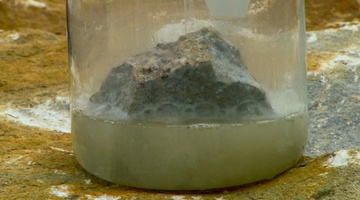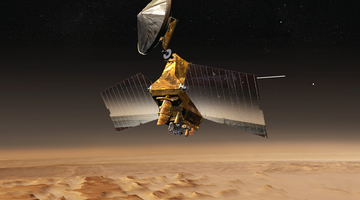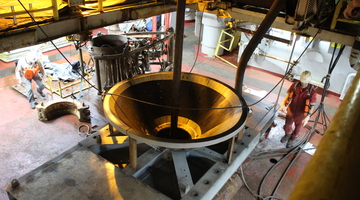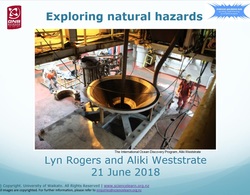

Limestone is a sedimentary rock that has been utilised by humankind for thousands of years. This timeline traces some of the key points in the history of limestone, from Egyptian pyramid building ...
READ MORE

Limestone is an unusual rock in that it fizzes when dilute acid is placed on its surface. It is the presence of calcium carbonate that is responsible for this. The calcium carbonate content of ...
READ MORE

Professor Kate McGrath’s team of researchers at the MacDiarmid Institute are trying to replicate the way in which pāua (Haliotis iris) lay down their shell material. Pāua shell is an arrangement ...
READ MORE

In this activity, students view the interactive Calcination – lime from limestone, which shows the industrial processing of limestone into lime, and use the information to complete a matching ...
READ MORE

In this activity, students investigate some of the physical, chemical and physiological properties of carbon dioxide gas. In addition, a model demonstrating the amount of carbon dioxide in the ...
READ MORE

In this activity, students view the interactive Limestone’s secrets revealed and then answer graded sets of questions based on the content of the video clips from the interactive. By the end of ...
READ MORE

The Planet Four online citizen science project is designed to assist planetary scientists to identify and measure features on the surface of Mars that don’t exist on Earth. Help is needed to ...
READ MORE

Be part of a worldwide movement and use Global Earth Challenge to submit or classify photos to help our planet’s environment and human health. Global Earth Challenge is a citizen science campaign ...
READ MORE

This citizen science project wants your assistance to extract information from various climate scientific graphics to help combat misinformation and support scientific communication. Using this ...
READ MORE

In this recorded professional learning session, Lyn Rogers and guest Aliki Weststrate from GNS Science explore some of the science involved in building our understandings of natural hazards ...
READ MORE

In this recorded professional learning session Dr Rosemary Hipkins joins us to discuss the concept of enduring competencies – competencies that focus on what students can do with their knowledge ...
READ MORE

In this recorded webinar Pauline Waiti and Rosemary Hipkins explore the idea of knowledge systems with examples from science and mātauranga Māori. The report Enduring Competencies for Designing ...
READ MORE
Professor Kate McGrath, of the MacDiarmid Institute, explains the process by which organisms that have hard structures such as bone and shell deposit mineral-rich hard tissues. The process is ...
READ MORE
To make a material comparable to a natural biomineral involves using known techniques and procedures that hope to capture the essential elements of the natural system. In this video clip ...
READ MORE
Carefully controlling the pH of the hydrogel and soaking it in solutions containing calcium and carbonate ions can initiate the mineralisation process. Professor Kate McGrath, of the MacDiarmid ...
READ MORE

This is the slideshow that supports the Exploring natural hazards PLD webinar. Use the Slideshow menu for further options, including view full screen, and go here for the download option.
READ MORE

This timeline lets you see the historical developments in technology related to weather monitoring, measuring and forecasting. It also shows how scientific thinking changed over the centuries as ...
READ MORE

In this interactive, learn about limestone’s origins, formation, properties. To use this interactive, move your mouse or finger over any of the labelled boxes and click to obtain more ...
READ MORE